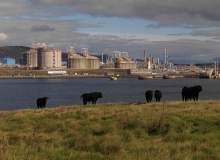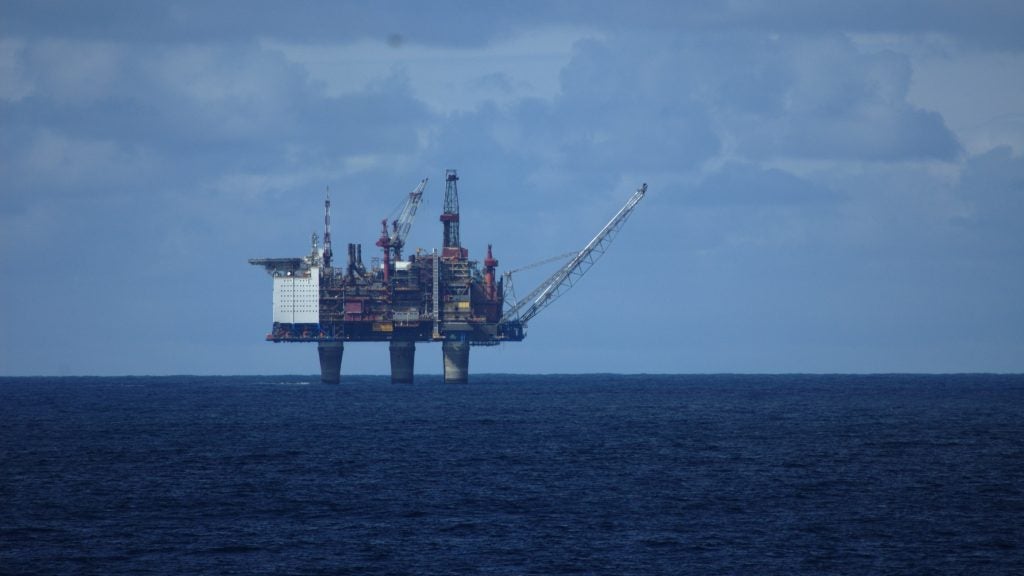

Offshore oil and gas production represents an important part of many countries’ energy infrastructure, but these operations are in themselves energy-intensive, with on-site power requirements ranging up to several hundred megawatts for larger and more complex platforms.
For the most part, offshore platforms burn diesel or gas, powering diesel engines or gas turbines to run their machinery. In many ways this seems the natural way to go – if an offshore platform is sitting on a major producing gas field, why not use it to drive local gas turbines?
On-site gas turbines: an inefficient status quo
Although burning gas locally seems like the common sense solution to meet platform power requirements, it’s hardly ideal. As Rahul Chokhawala, a power transmission specialist formerly of ABB Process and Automation and now strategy manager for high-voltage direct current (HVDC) at GE Global Research, explained in a 2008 paper, the simple-cycle gas turbines usually used on offshore platforms are inefficient from a financial and environmental perspective.
“Simple-cycle GTs [gas turbines] have remarkably low energy conversion efficiencies, particularly when operated at less than full capacity, which is often the case,” Chokhawala wrote. “Best operating efficiency of GT generation is in the range of only 25-30%…A platform with a generating capacity of 100MW would typically release over 500,000 tons of CO2 per year, combined with the emission of about 300 tons of nitrogen oxide, a gas corrosive to both the environment and to people’s health.”
Given the environmental cost of running gas turbines and the financial cost of operating and maintaining them, the prospect of an alternative power supply system using energy generated onshore and transferred to an offshore platform via subsea transmission cables is gaining attention as an option, or even a requirement.
How well do you really know your competitors?
Access the most comprehensive Company Profiles on the market, powered by GlobalData. Save hours of research. Gain competitive edge.

Thank you!
Your download email will arrive shortly
Not ready to buy yet? Download a free sample
We are confident about the unique quality of our Company Profiles. However, we want you to make the most beneficial decision for your business, so we offer a free sample that you can download by submitting the below form
By GlobalDataSailors have always told of bad things that lurk in the mists, and while the legends may not be much more than tales, the possibility of flammable mists is all too real..
Norway: offshore power pioneer
While the power-from-shore concept has yet to be adopted widely in the offshore sector, it’s not a new idea. As the country hosting arguably the world’s most advanced offshore oil and gas industry, it’s no surprise that Norway has been a pioneer in the field.
On top of Norway’s broad base of offshore technology expertise, its onshore energy mix, which is dominated by renewables, is a good fit for shore power, as the Norwegian Oil & Gas Association’s environmental communications manager Pia Martine Gautier Bjerke explains. “In general, Norway has a lot of hydropower, and onshore generation will therefore in some cases be a reasonable choice from a climate perspective,” she says.
The country has now carried out several power-from-shore projects in the North Sea, with consistent involvement from Swiss power systems powerhouse ABB. Offshore production sites that have implemented shore-based power supply in the Norwegian North Sea over the last six years demonstrate both AC and DC electricity transmission, the two options available to carry out the concept. AC tends to be a less efficient choice over long distances due to its susceptibility to line losses, but can be effective over relatively short distances.
AC transmission was used to provide onshore power to national oil company Statoil’s Gjøa platform as it is located just 98km from the Norwegian coast. The power-from-shore system for the platform was completed by ABB in August 2010, but the comparatively short hop from coast to platform didn’t preclude challenges, with ABB citing the constant environmental stresses that subsea cables must withstand, which necessitated a tailor-made fatigue resistance system for the dynamic cable carrying power the last 1.5km through open water to the platform.
Longer-distance shore power projects generally require DC power transmission, which was used for BP‘s Valhall field, which completed a large-scale redevelopment project in January 2013. The project introduced a shore-based power system to “make direct emissions to air from the Valhall field close to zero”, according to the company. A 294km HVDC cable now transfers electricity from a sub-station at Lista on Norway’s south-west coast to the platform, where it is converted back into AC power by a specialist on-site plant.
The electrification of Utsira High
A more recent development in Norway’s ongoing push to expand shore-based power supply in its offshore sector illustrates both the country’s commitment to minimising platform emissions and the balance between environmental and economic factors that regulates its implementation.
The Utsira High region, also known as Utsira Height, lies deep in the North Sea close to Norway’s border with UK waters, and is one of Norway’s most exciting oil and gas production locations, especially since Statoil’s discovery of the massive Johan Sverdrup field, which at its peak will produce up to 660,000 barrels of oil a day and is expected to maintain production until 2050.
Statoil has been investigating the possibility of shore-based power at Johan Sverdrup, and indeed the wider Utsira High region including the fields of Edvard Grieg, Ivar Aasen and Gina Krog, for several years. The concept proposed by Statoil involves two parallel DC cables transmitting electricity from facilities at Kårstø to Utsira High 200km away, with Johan Sverdrup, the largest of the four new developments, acting as a power supply hub for the surrounding area.
Cost/climate balance: the Utsira High debate
In May 2014, the Norwegian Parliament unexpectedly accelerated the timetable for Utsira High’s electrification when it pushed through a proposal to require that Utsira High operators run using onshore power from the start-up of Johan Sverdrup’s first production phase in 2019, prompting Statoil and other industry partners to argue that they would struggle to deliver that quickly without major development delays. Shares in Statoil, along with fellow Utsira High operators Lundin and Det norske, immediately began to wobble.
In 2013, pipeline equipment and services specialist T.D. Williamson had to mobilise quicker than ever before.
The proposal reflects the fragmented nature of Norway’s parliament, with the Conservative/Progress Party coalition in power unable to resist a united call from opposition parties, including Labour, the Socialist Left and the Christian Democrats, to step up and formalise the electrification requirement. While Statoil warned that a year’s delay would incur a pre-tax value loss of NOK20bn ($3.4bn), politicians were talking tough and a stand-off looked increasingly likely.
“We’re telling the government to demand a comprehensive solution that will encompass the area’s full need for power,” said Labour Party MP Terje Aasland at a news conference, reported by Reuters. “We’re completely certain this can happen without causing delays.”
Case by case: the future of land-based power supply
Fortunately for the industry, cooler heads prevailed in parliament, where in June parties agreed to a revised deadline of 2022 for DC cables to be laid, buying an extra three years for Statoil and its partners to develop and implement the Utsira High initiative. Nevertheless, this flurry of discussion does raise questions about the future of land-based power supply for offshore installations, and whether it should be more forcefully rolled out with the help of state legislation.
Although the carbon savings from shore-based power supply are not in question – Norway’s Petroleum Directorate have estimated it could reduce the country’s CO2 emission by up to a million tonnes every year – Bjerke emphasises the Norwegian Oil & Gas Association’s stance that the measure should be applied on a case-by-case basis, and not ideologically. The suitability of the carbon-reducing power supply technology could depend on a whole range of factors, including distance from shore, marine conditions, technology maturity and whether onshore power generation has the capacity to take on another significant block of demand.
“The Norwegian Oil & Gas Association is positive towards shore-based power when this is the best power solution for the specific field,” Bjerke says. “However, we believe that this is a decision that needs to be made on economic grounds, considering the aspect of cost/climate benefit. The newly proposed requirement for producers in the Utsira Height came at an early stage in the process – and was not expected until next year, when the plan for development and operations will be considered by the Parliament. We are critical towards the Parliament’s uncommon procedure regarding Utsira, and our position is that the politicians need to ensure a predictable framework for the industry in the years to come, as they have done in the 40 years that lie behind us.”


.gif)


